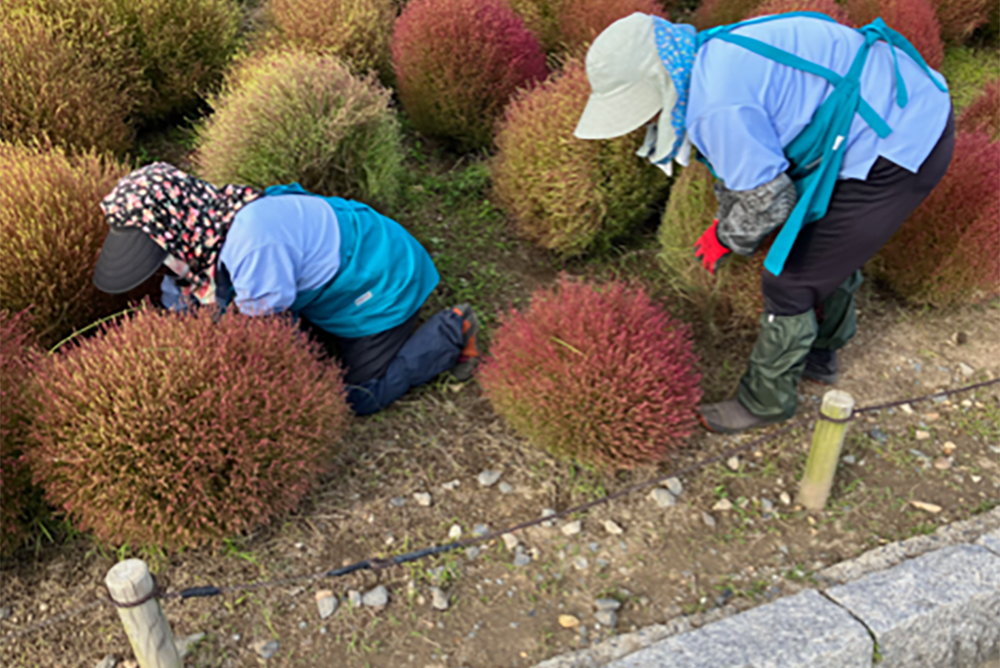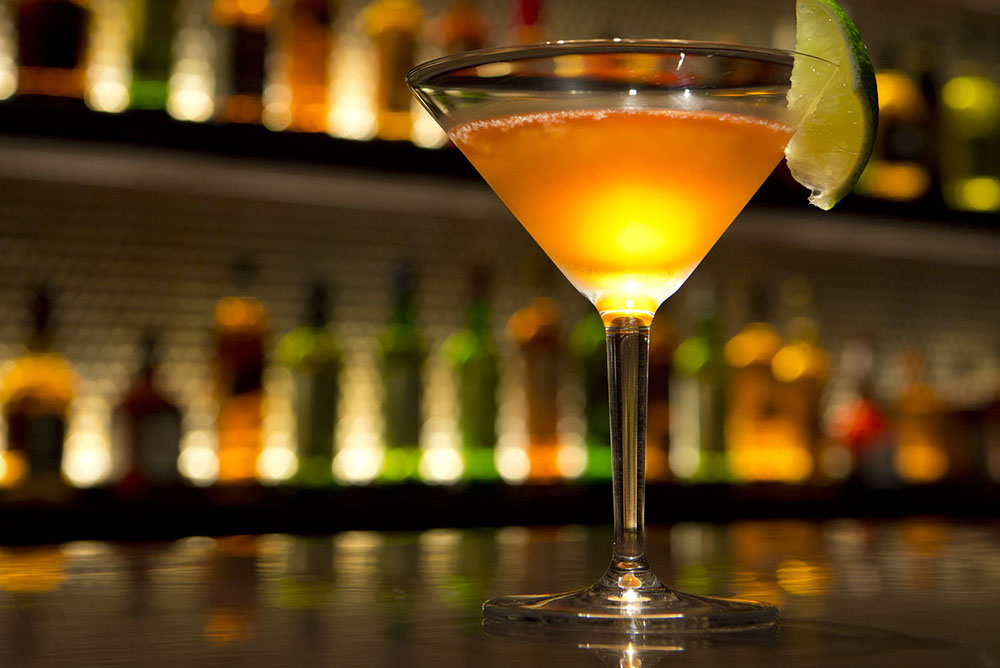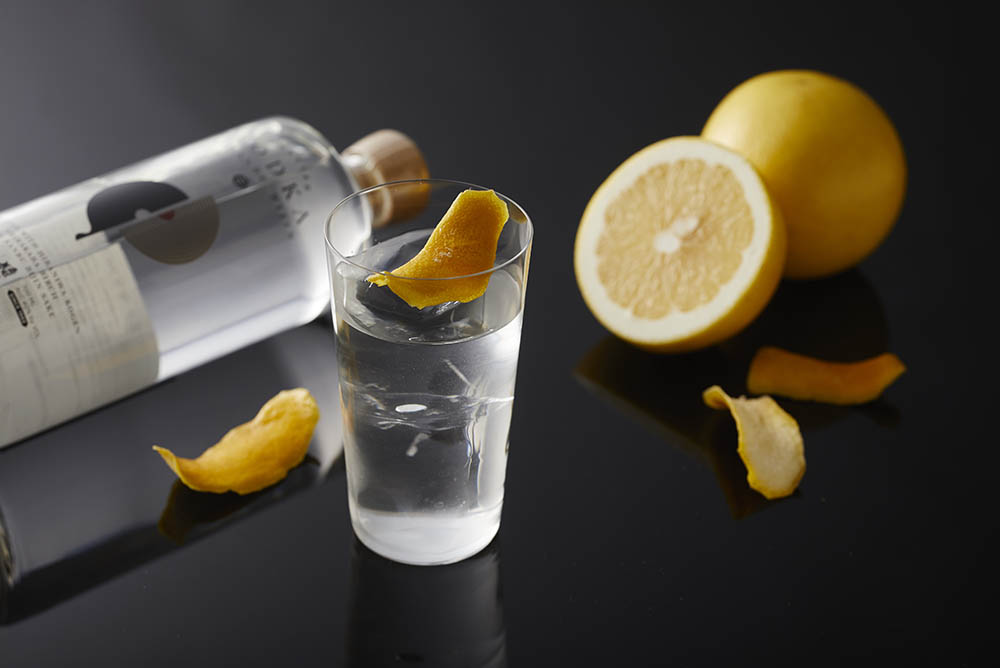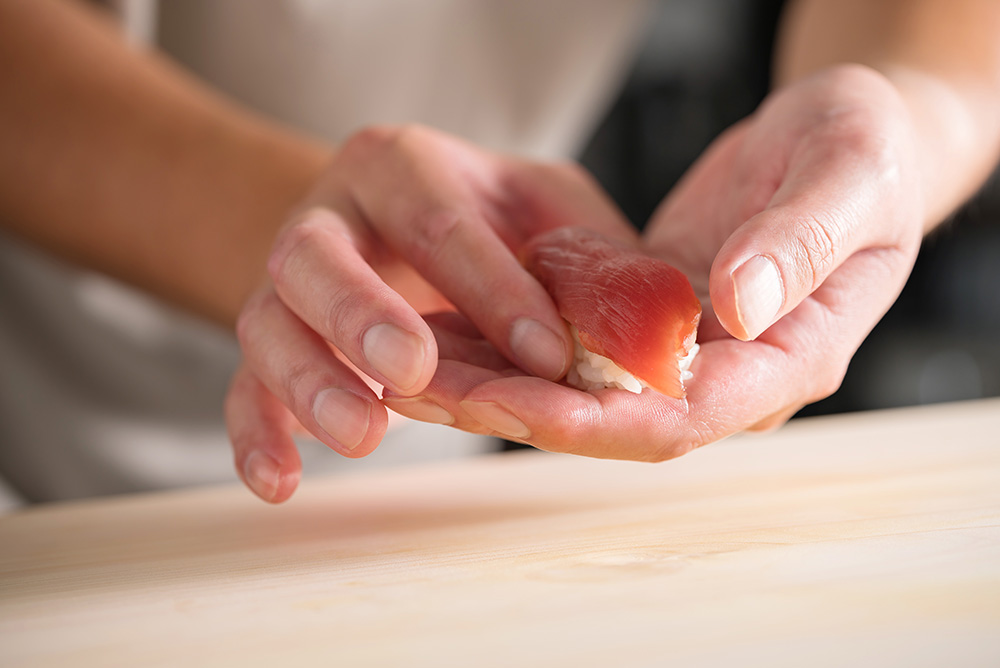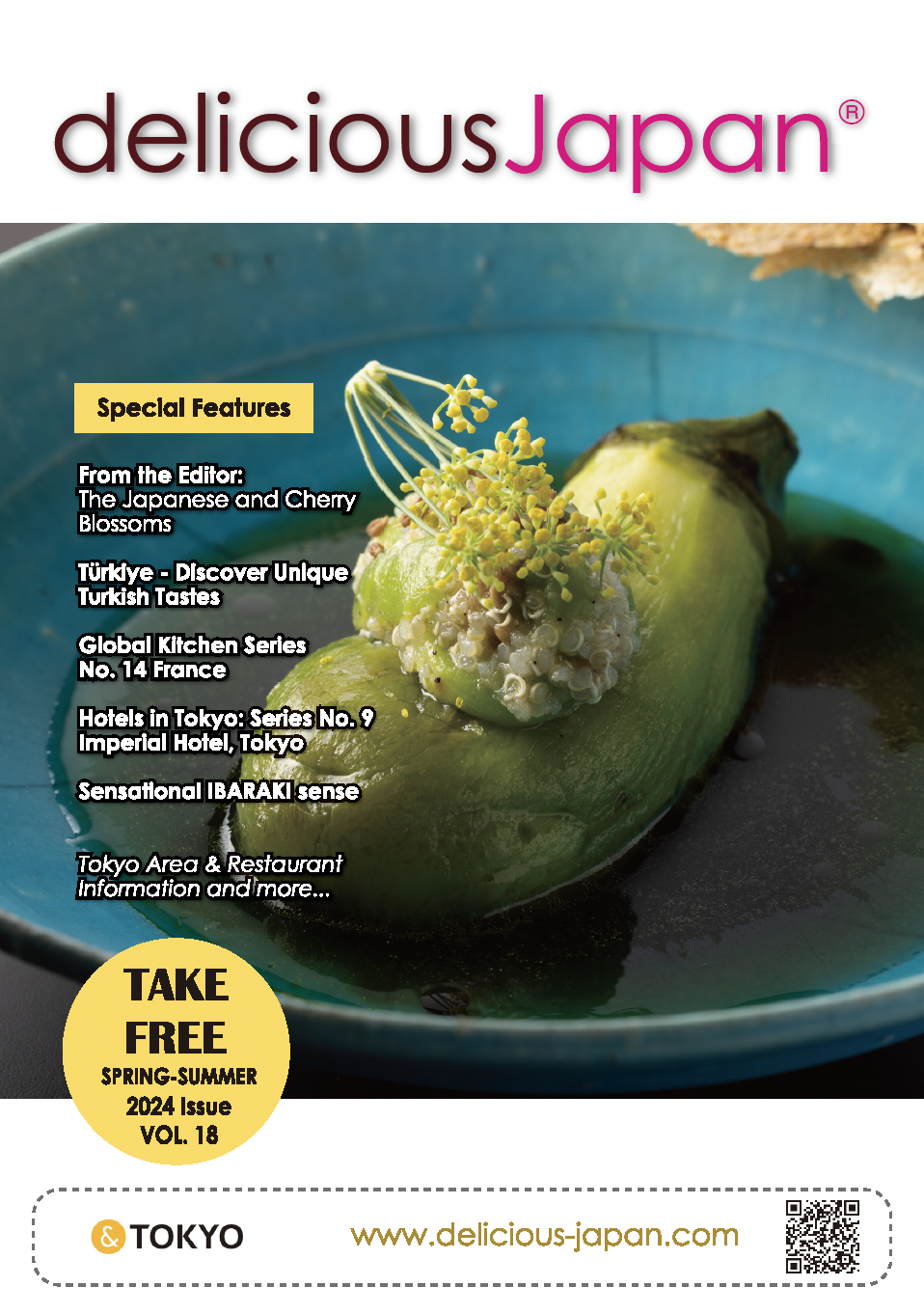
300 Years of Nada Brewery
Takaharu Nishimura is 14th owner of the Sawanotsuru Brewery, which carries on 300 years of tradition. Nishimura softly but passionately talked about the charm of Nada sake (sake from the Nada district of Kobe), and how to enjoy it.

Takaharu Nishimura
CEO of Sawanotsuru
What are the basics of making Sawanotsuru Nada Sake?
We see the basics of making sake as “serious sake-making” and “serious trading”. At our company, we are always careful to guard our integrity. Sawanotsuru was founded in the Edo era, about 300 years ago. The key things in sake-making are rice, water, and people. We started out as a rice trader, so we have always cared about the rice and scrutinized it carefully. We use “miyamizu”, which is rich in minerals, as our water source, so we can produce sake with depth and a good finish. Sake is something to be nurtured, not made. The lactobacillus, koji mold, and yeast are the microorganisms essential for nihonshu, as are the Tanbastyle toji (chief sake brewers) who carry on the tradition of nurturing them. The tradition of the Tanba style can be summarized as “nurturing spirit”. The toji is an expert who nurtures people as well as sake. The toji says, “The important thing in making sake is teamwork. The role of people in the process is to regulate the microorganisms (yeast and koji) that are essential for sake making. The teamwork nurtures and develops those people.” The people who make nihonshu in the Nada area, and in other regions, imbue it with their deep love.
What are the characteristics of Nada sake?
Depth and finish. Sake from Nada is characteristically refreshing, while having a deep flavor. Its body is large and deep, so it complements many kinds of food superbly. We can thank miyamizu water, with its abundant mineral content, for that. Normally, sake made in winter deteriorates in quality when it goes through the summer. As we use miyamizu, which is hard water, another characteristic of Nada sake is that it is autumnal sake, with flavor that really comes together in the fall after going through summer. Nihonshu as a health drink Nihonshu can be described as a nutritional treasure for the abundant amino acids that are formed in it by the action of lactobacillus, koji mold, and yeast. Consuming those amino acids has been scientifically proved to lower stress, improve blood flow, and strengthen the immune system. For beauty, bathing in sake is known to be a highly effective skin beauty treatment, and many cosmetics derived from nihonshu have come onto the market recently. Nishonshu is said to be the best of all medicines. It’s a double-edged sword, being medicinal in moderation and physically harmful in excess. Please be very careful to avoid drinking too much.
There are many types of nihonshu, including daiginjo-shu, ginjo-shu, junmai-shu, honjozo-shu, nama-zake, and gen-shu. What advice can you give about choosing nihonshu?
Ginjo-shu and daiginjo-shu, made with the ginjo fermentation method of long fermentation at low temperature, contain large amounts of aromatic ingredients that are only present in trace amounts in regular sake, so the drinker can enjoy the special ginjo fragrance. There are two types of ginjo: Hana-ginjo, which is strongly aromatic and flowery, and aji-ginjo, which is characterized by the mellow sweetness of its bouquet. If you want to enjoy it as an aperitif, I think the hana-ginjo type also works well, but aji-ginjo is certainly the right choice for drinking with a meal. What I recommend is “junmai-shu”. That is sake that is made solely from good rice, rice malt, and water, with no added alcohol. While many types of nihonshu are made, at Sawanotsuru we have succeeded in developing “kome dake no sake - umami sono mama 10.5” (Pure rice sake - 10.5 with all flavor), which overturns theestablished wisdom about junmai-shu. Nihonshu generally has an average alcohol content of 15.4%, and around 13.5% is said to be the borderline for retaining the balance of flavors of nihonshu. Of course, there are special brewing techniques, but by raising the proportion of malt we use, we have created a variety of nihonshu that retains the natural umami flavor even with only 10.5% alcohol content. It’s excellent, and I hope everyone tries it.
Do you have any advice about how to drink and enjoy nihonshu?
I think nihonshu is the world’s most intricately flavored liquor. How about enjoying a warm flask of complex and delicate nihonshu, which is transformed by subtle variations in temperature? One way to enjoy nihonshu is to start from a tepid temperature (35~40°C) and experiment until you find your favorite temperature. The best way to heat a flask of sake is to stand it in warm water, but you could also use a microwave oven. If you do use a microwave take care to avoid overheating. The shape of the container causes variations of temperature within the content, so don’t forget to mix it up. Also, nihonshu goes well with cheese, so you should certainly try that combination.

